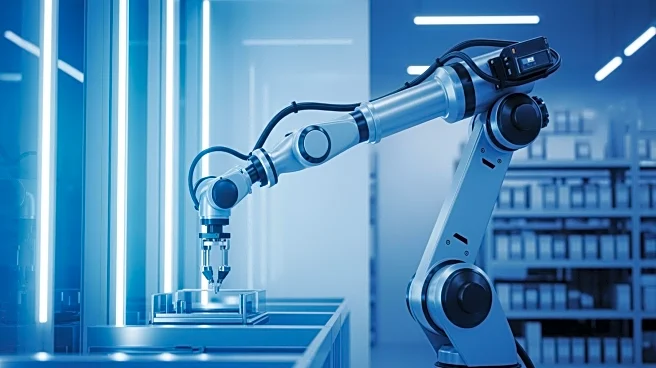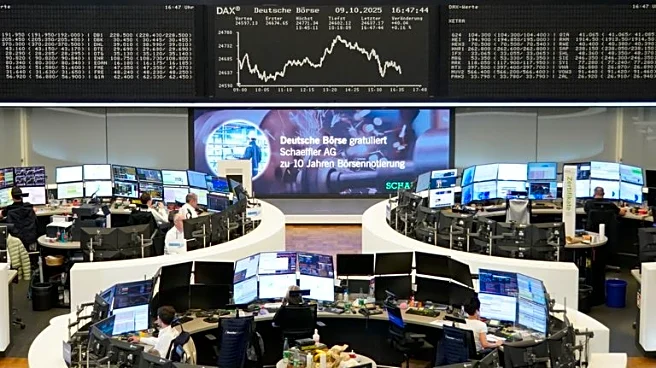What's Happening?
Amazon is reportedly planning to replace over 600,000 human jobs with robots by 2033, according to internal documents cited by The New York Times. This move is part of Amazon's broader strategy to automate
75% of its operations, which could significantly reduce the need for human labor in its fulfillment and delivery network. Currently, Amazon employs approximately 1.5 million people, making it the third-largest employer in the U.S. The company has already deployed over 1 million robots, which is about two-thirds the size of its human workforce. While Amazon claims that its investments will continue to create jobs, the potential reduction in human roles raises concerns about the future of employment in the logistics sector.
Why It's Important?
The shift towards automation at Amazon could have profound implications for the U.S. labor market, particularly in the logistics and warehousing sectors. As one of the largest employers in the country, Amazon's decision to replace a significant portion of its workforce with robots could lead to job losses and wage reductions. Studies have shown that the introduction of robots can decrease wages and eliminate jobs, with estimates suggesting that each robot added per 1,000 workers reduces wages by 0.42% and has cost humans an estimated 400,000 jobs. This trend could exacerbate economic inequality and necessitate policy responses to support displaced workers.
What's Next?
Amazon's plans to automate its operations may prompt discussions among policymakers, labor unions, and industry stakeholders about the future of work and the need for retraining programs. The company has indicated its intention to invest in upskilling its workforce, but the scale of potential job displacement may require broader societal efforts to address the challenges posed by automation. Additionally, Amazon's strategy to present itself as a 'good corporate citizen' through community engagement may be scrutinized as stakeholders assess the company's impact on local economies.












